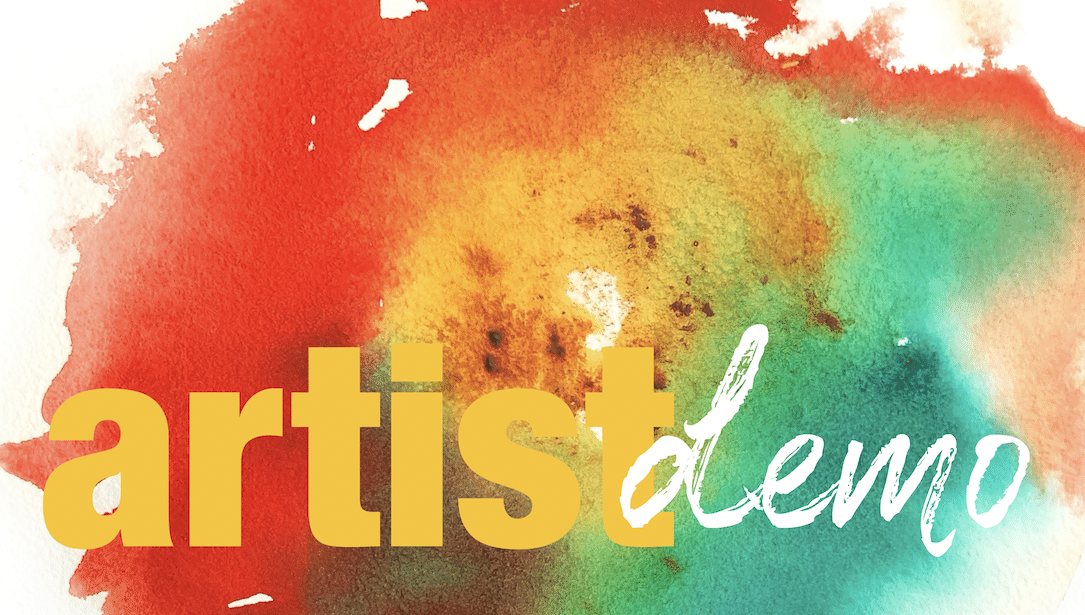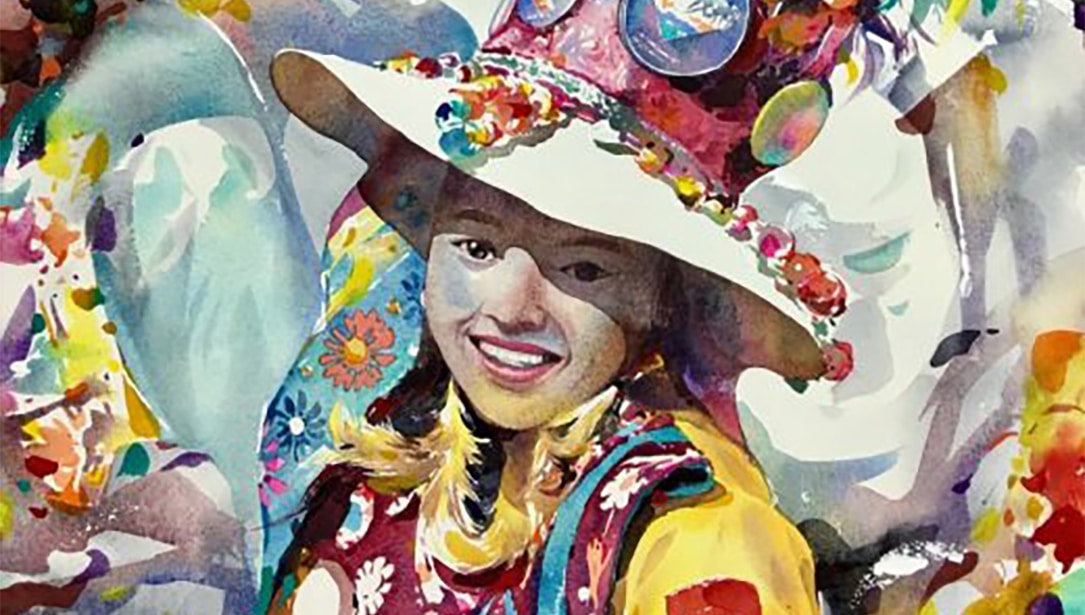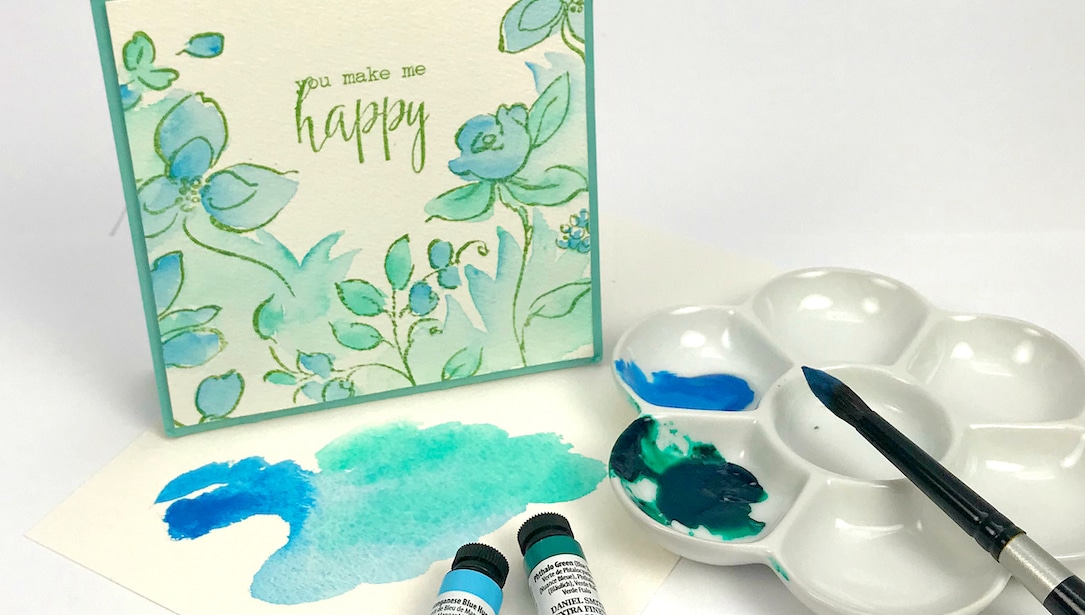What can artists paint when they love both realism and abstraction? Karlyn Holman (1940-2019) suggested blending these two styles to create semi-abstract paintings.
When this Wisconsin artist saw her painting developing too closely toward realism, she would focus more on the elements of design – using shape, color, value, texture and line. Movement also played an important role in her work. And when her painting felt too abstract, she looked for recognizable forms to bring it back to a comfortable balance. “Semi-abstraction has more appeal to me than absolute realism or total non-objective painting. One of the easiest ways to see abstractly is to view your subject in close focus,” said Karlyn. “The work of Georgia O’Keefe is an outstanding example of the use of this technique.”
Karlyn’s painting, Grape Expectations is an example of a semi-abstract painting using the the elements of design to create a well-balanced composition. This is successfully achieved by omitting a lot of detail and simplifying the subject. A feeling of lightness will prevail by leaving white areas of the paper.
During her world travels teaching Watercolor: Fun and Free workshops, Holman often stopped to photograph and paint fascinating subject matter. While painting village scenes in the vineyards in the Alsace-Lorraine region of France, she noticed luscious grapes were ripening in the dappled sunlight. “One day, we actually made our bus driver stop so we could photograph the vineyards and pick some leaves,” she recalled. Later, while indoors, Karlyn created a semi-abstract watercolor painting by stamping, stenciling and cutting out shapes. Artists of all levels can express themselves by using these playful methods.
If you’d like to try this method but do not have grapes growing on vines, try painting whatever is available in your vicinity. Use plants or garden flowers such as ferns, hollyhocks or even dandelions, using several leaves of the plant for the stamping step. Prior to painting in this manner, choose a close-up subject. Though working from a photo may be easier, painting directly from nature can be fun and challenging. Study your subject to decide the shapes, colors and textures to use.
A preliminary sketch isn’t always necessary. Sometimes, jumping right in can be the best approach, full of surprises. “All you really need is a spirit of adventure,” said Holman.
The whiteness of bright white watercolor paper (cold press – 140 lb.) lets colors appears vibrant. Holman suggested wetting both sides of the paper so it will lie flat and will give you a longer working time. Instead of soaking and stretching the paper, she simply uses a brush for this step. Karlyn’s palette included many vibrant, transparent colors – these were a few of her favorites: Quinacridone Gold, Quinacridone Burnt Orange and Ultramarine Turquoise. She also loved to experiment with metallics and Luminescent Watercolors. “Although artists have many choices of tools and materials to use, the most important tool is your own mind’s eye,” she has said.
The following step-by-step demonstration illustrates a simple, direct approach for designing space and creating textures that capture the essence of grapes hanging on vines. “This lesson is great practice for sharpening your negative painting skills,” said Karlyn.

Step 1
Karlyn sketched a value study using markers of two different gray tones, leaving the white of the paper as the lightest value. Although markers are a quick way to achieve nice, even tones, you may prefer to use pencil or crayon for this step, using different gradations.

Step 2
After wetting the paper on both sides, capture the essence of light values by applying pure, light colors directly on the paper instead of mixing them on your palette. While moving your brush across the wet paper, keep directional movement in mind.
Though you’re not painting the subject yet, select base colors by referring to your value study. For instance, interpret the purple grapes by painting a pink-red first and then adding a warm blue over the top. Remember to save your white!
After the harmonic colors become acquainted, Karlyn focused on creating contrast. Using the back of actual grape leaves, she applied yellow and blue, adding to touch of complementary color. When stamping the leaves on the paper, the colors mix together in surprising ways. Keeping the leaves in place on the paper, she used them like masks by painting around them. By cutting grape-sized circles out of wax paper and placing them in clusters on areas of wet color, these shapes will help to create a focal point.
By placing complementary or cool colors in the background, the painting will appear alive and exciting. She painted some trailing vines, mid-tone darks, then waited for the paint to dry.

Step 3
This is the most exciting step – remove the leaves and wax paper to reveal the textures you’ve created.

Step 4
Pull your painting together by adding a few darks and a few negative shapes – use your intuition to complete the painting. Keep in mind that some parts of the subject may be painted more realistically and others may be more abstracted. Try to achieve a variety of textures and shapes, lost and found edges, and as much contrast as possible to obtain a delightful, semi-abstract painting that is unique to your own style.







